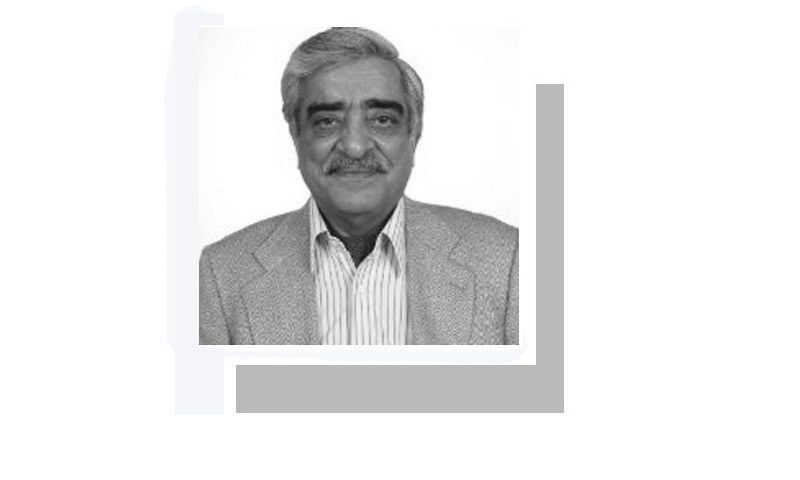THE revelation by Foreign Minister Shah Mahmood Qureshi in a press conference in Multan that Pakistan had credible intelligence about Indian plans to attack Pakistan between April 16 and 20 was followed, within hours, by an Indian Foreign Office spokesperson’s shrill dismissal of the claim as “preposterous” and “clearly aimed at whipping up war hysteria in the region”.
The spokesman went on to add: “This public gimmick appears to be a call to Pakistan-based terrorists to undertake a terror attack in India.”
One can be certain that the foreign minister’s assertion was based on what he had been told by military intelligence. What is less certain is whether this intelligence was based entirely on solid information. It is far more likely that their claim was based on their assessment of Ajit Doval — recognised as Prime Minister Narendra Modi’s point man for handling relations with Pakistan — and his proclaimed doctrine of offensive defence. This, in their assessment, would include Doval planning attacks that would keep Pakistan off balance.
In both countries, these public statements suggest that the ground realities do not figure in the calculations of the two sides in this period of heightened tensions. On the Pakistan side, the Indian capacity rather than what the Modi government would find most beneficial would have determined the military assessment. On the Indian side, the fear that this was a call for a terrorist attack on India ignored the ground reality that Pakistan’s new government is intent on curbing and eliminating such groups.
We can retaliate in kind but keep it confined to a verbal battle.
The truth of the matter is that for Prime Minister Modi the ‘decisive’ action he took after Pulwama has given him all the political benefits he could garner, despite the clear evidence that the so-called pre-emptive strike was an utter failure. A civilian evaluation, therefore, would have been that Modi is too careful a politician to risk damaging the image now created of ‘a 56-inch- chested daring leader’ by another strike that would invite retaliation and possibly the loss of some further military assets.
On Pakistan’s side, the Indians know that, beset by economic problems and working frantically on resolving issues with the Financial Action Task Force and the IMF, the last thing Pakistan needs is another episode of physical confrontation with India. This is the reality the Indians recognise even while continuing to denounce Pakistan as the country from which terrorists are fomenting trouble in India-occupied Kashmir.
No Indian policymaker can argue after Prime Minister Imran Khan’s statesmanlike gesture of releasing the captured Indian pilot that Pakistan wants to maintain a hostile posture or that it will not take two steps for each step that moves India forward towards resuming a dialogue.
It is, of course, important for Pakistan to ensure that its armed forces maintain vigilance, but should that mean the costly deployment of forces on the border and the closure of 11 of the 12 air routes through Pakistani airspace, which presumably are regarded as necessary for security? The estimates of the extra cost imposed on travellers from Pakistan to such diverse places as Sri Lanka and Thailand run as high as one billion dollars — a cost that our perilously low foreign exchange reserves find difficult to meet.
Realistically, perhaps, one can accept that even when Modi sends a relatively conciliatory message on Pakistan Day, his party cohorts may find it useful to denounce Pakistan in their media and social media message linking it to the harsh message that is being delivered to Indian Muslims. We can retaliate in kind but keep it confined to a verbal battle and hope that, once the Indian elections are out of the way, the Modi government — which is likely to return to power albeit with a reduced majority — will see the need to talk to Pakistan to resolve the issues that have beset the relationship and acquired a sharp edge since Pulwama.
It is perhaps naïve to expect that Prime Minister Modi and the hardliners in his party will modify their stance towards Pakistan, but there are good reasons for such a change. While the Indian economy is still doing well, it has not delivered the 10 million jobs that Modi had promised to create, nor has it fully recovered from the adverse impact of the demonetisation that he carried out in his bid to digitise the economy.
The World Bank report titled Half a Glassful has talked of the immense potential for intra-regional trade within Saarc. Clearly, as the largest country of the region, India will be the principal beneficiary, but the others too would be much better off. It would perhaps be going a step too far to envisage India as one of the regional countries that can benefit from CPEC, but that too is a very real possibility as some Indian industrialists have recognised.
The writer is a former foreign secretary.
Published in Dawn, April 9th, 2019


















































